A spiritual, revolutionary and cultural center during the National Revival era in 17 and 18 c., today the town of Bansko is a famous skiing resort. Located in Southwestern Bulgaria, at the foot of the Pirin Mountain, the town is encircled by dozens of warm mineral springs. The slopes of the mountain offer countless tourist routes and breathtaking nature sights. Bansko is the starting point to a unique 16-km ski track – lighted at night and with guaranteed snow cover. The summer and fall are reserved for a diversity of cultural events including the International Bansko Jazz Festival.
The only vantage point where from Bansko can be seen in all directions is the bell tower of the church. It rises in the yard of the St. Trinity Church compound. The steep wooden stairs that lead up to the roof are as old as this remarkable tower that has emerged as the town’s symbol. It was built in 1850 and its clockwork was assembled in 1865. The church is even older and has given the compound its name. It was consecrated in 1835, two years after the start of construction works.
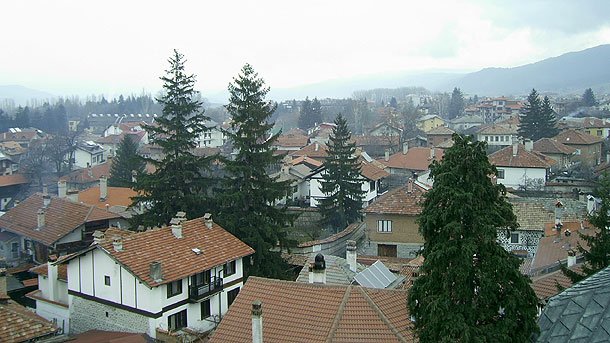
© Photo: Albena Bezovska
Back at that time when Bulgaria was part of the Turkish Empire, St. Trinity was one of the largest Orthodox churches in the Balkans. It was a time when construction of Christian churches was allowed only in places where cult structures or sanctuaries had been found. Besides, highest point of the new building should be lower than a figure of a man on horseback. So, many churches built in that period of Bulgarian history, were half dug into the ground.
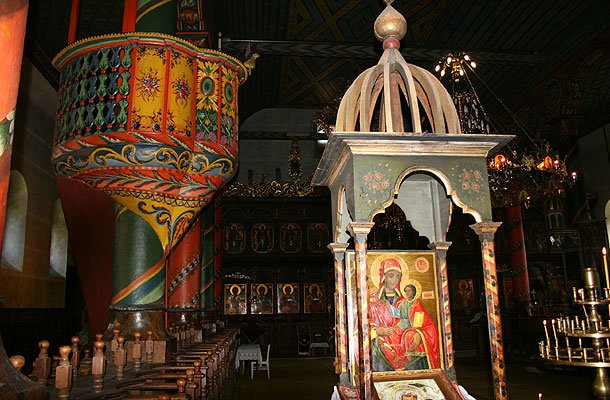
© Photo: BGNES
The Bansko people however, were very keen to have a church, and a big one at that. The old church that has survived to the present day was away from the town. The well-to-do merchant Lazar German and Bansko Mayor, was the most active supporter of the cause. The locals tell the story of how Lazar buried a cross, an icon and church plate in his garden. He then asked an old woman to dream of a church in the same place. She made public her dream and officials from the Turkish authority in the town went to see the place, found the “evidence” (the cross, icon and church plate) and wrote an application to the valia (district governor). Lazar summoned the townsfolk and told them that a lot of cash and hard voluntary work would be needed. The he turned to the richest Bansko residents with the following words: „God has given us money for our joy and to the benefit of the community!” With this money-raising started. Lazar German donated his garden, the place where St. Trinity Church was eventually built. The trouble was that the permission from the authorities was not coming. By a lucky concurrence of circumstances however, the problem was resolved. A baby boy was born to the family of the district governor in Thessaloniki. Lazar raised some cash from the rich guys and sumptuous gifts were prepared for the wife and baby of the governor. In between the embroidered fabrics the Bansko people placed a purse stuffed with gold coins. The Turkish governor was moved by the respect shown to him and signed the permission for the construction of a new church in Bansko. What followed – from Hristo Boychin, a voluntary sexton at St. Trinity:
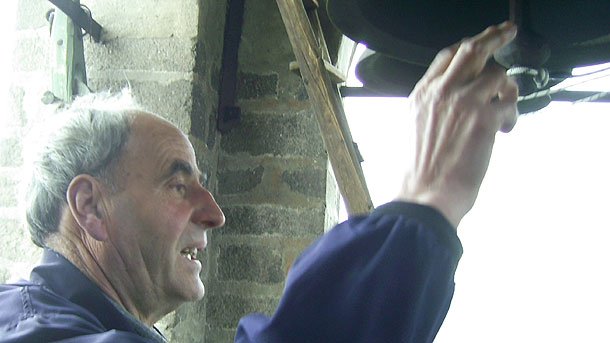
© Photo: Albena Bezovska
“Aiming to build a bigger church than the standard, the Bansko people took up a very diplomatic approach. Under the permission they obtained all they could build was a small chapel. They however opted for good tactics and erected a high fence for a start. Only then they went on digging the foundations. Every night they enlarged the excavation. When construction proper had to begin, it transpired that the project had run out of cash. So, Lazar traveled to Nevrokop, the present-day Gotze Delchev. He asked a rich Turkish merchant for a loan and lied he needed the money for his business. He got the loan and invested everything in the church, but the Turks found out about his lying, and threw him into the Diyarbakır Prison where he died. It was his idea to carve crescents above the entrance of the church. The man felt he would not live long to see the church completed and so he ordered to carve the Islamic symbols into the stone.”
What a far-sighted move, exclaims Hristo. When the Turlsih officials came, they issued an order to pull down the church. However when they saw the crescents, they took off their fez caps and bowed. In this way the church survived.
Voluntary work went on in full swing – the roof of the high building took quite some time. The architectural solution sought to create an illusion that the church was smaller than in reality. Fact is however that the vault at its highest point is 20 m high; the length of the structure is 44 m and its width 24 m. The one-meter thick walls were made of white marble.
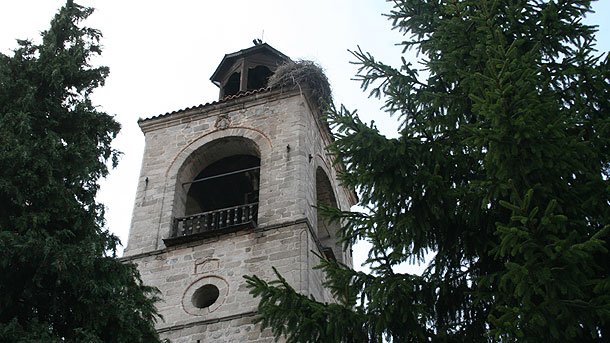
© Photo: BGNES
The church welcomes visitors through thick wooden gates made of huge white fir trees. The twelve columns that support the roof stand for the 12 apostles. The frescoes have been painted by artists from the Debar School. The icons are the work of the celebrated masters from the Bansko icon-painting school Dimitar and Simeon Molerov. Velyan Ognev has painted a starry sky in the ceiling with clouds and angels crossing it. Thick chains descend from it with chandeliers and church-lamps. The pulpit is richly decorated with stylized drawings. On 5 October 1912, one of Bulgaria’s finest poets Peyo Yavorov ascended its beautiful spiral stairs. He had volunteered to lead a detachment in the 1912 First Balkan War waged for the liberation of territories with predominant Christian population still under Turkish rule. From this pulpit Yavorov proclaimed Bansko’s new freedom with the words: „Brothers, from today you are free Bulgarians!” Later, the Bansko people inscribed these words on the poet’s monument that stands in the churchyard, close to the bell tower. The compound includes the small church The Reverend Paissii of Hilendar.
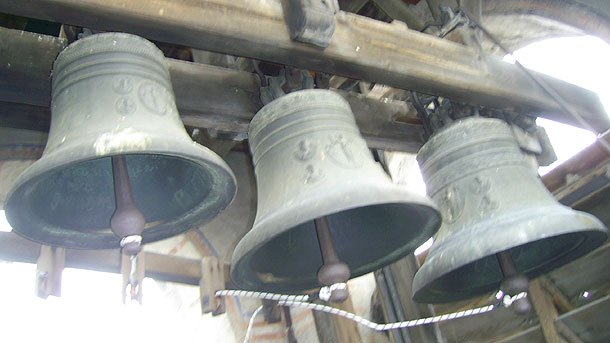
© Photo: Albena Bezovska
If you happen to visit to Bansko, you will have the chance to enjoy the chime of the four church bells. They were cast sixty years after the church was built by the Veleganov brothers. The authorities gave their final permission for opening the church owning to another Bulgarian trick. The masons produced a large inscription on the biggest of the bells that reads, Cast During the Reign of Sultan Hamid II.
Today, the St. Trinity church in Bansko emanates an atmosphere of tranquility charged with faith and patriotism that have been accomplished with the sacrifice and the good will of its dedicated founders.
Translated by Daniela Konstantinova
Number 25 in the list of the 100 National Tourist Sites in Bulgaria is the St. John the Forerunner Orthodox monastery. Its ruins are situated on beautiful heights above the Arda River which crosses the town of Kardzhali. The..
In the remote 1889 Bulgarian Prince Ferdinand placed at the palace chambers his personal collection of Bulgarian and tropical birds, mammals and butterflies. Thus, the foundations of the first Bulgarian museum, known today as the..
The history of Bulgarian sports goes back a long way – suffice it to take a look at the sports equipment and the dozens of trophies won by renowned Bulgarian competitors on show at the Museum of Sports in Sofia. Katya..

+359 2 9336 661
